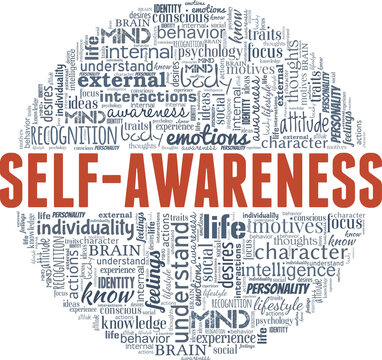Definition of Mindfulness and How It Works
Mindfulness is intentionally focusing your attention on the present moment without judgment. It is an ancient practice that has been adapted to modern times. A person can cultivate mindfulness by focusing on the present moment and consciously observing and embracing their feelings, thoughts, and physical sensations. It is a type of meditation that promotes calmness of the mind and body and mindfulness, clarity, and acceptance of the present moment (Majeed et al., 2018). It is a form of therapy for people suffering from some pain and helps them relax and avoid the possible pain they are facing.

How it Works
Mindfulness is being aware of your thoughts and feelings without judgment. By practicing mindfulness, individuals can become more aware of their emotions and the physical sensations associated with chronic pain (Niazi & Niazi, 2019). This can then lead to better self-regulation and improved coping strategies. Moreover, mindfulness training can aid in lowering the stress and worry often linked to pain. Mindfulness can lessen the severity of physical discomfort by inducing relaxation.
Mindfulness encourages an attitude of non-judgmental acceptance towards your thoughts, feelings, and sensations. Rather than labeling experiences as good or bad, mindfulness invites you to observe them with curiosity and openness. This non-judgmental stance allows you to develop a more compassionate and accepting relationship with yourself and your experiences.
Practicing mindfulness helps you cultivate a sense of presence and fully engage in the present moment. It allows you to shift your focus away from ruminating about the past or worrying about the future, which can alleviate stress and anxiety. By immersing yourself in the present, you can better appreciate the richness of each moment and make conscious choices about how to respond to various situations.
Aspects of mindfulness
Mindfulness is a mental practice and state of being that involves focusing one’s awareness on the present moment without judgment. It originated from Buddhist meditation practices but has since been adopted and adapted in various secular contexts. Here are some key aspects of mindfulness:
- Present-Moment Awareness: Mindfulness emphasizes being fully present in the current moment, paying attention to your thoughts, feelings, bodily sensations, and the environment around you.
- Non-Judgmental Awareness: Mindfulness involves observing your thoughts, emotions, and sensations without labeling them as good or bad, right or wrong. It’s about acknowledging experiences without attaching value judgments.
- Acceptance: This aspect involves accepting things as they are, including your own thoughts and feelings. It’s about not resisting or trying to change the present moment, even if it’s uncomfortable or challenging.
- Openness: Mindfulness encourages an open and receptive attitude toward experiences. Rather than trying to control or avoid certain thoughts or feelings, you allow them to arise and pass without pushing them away.
- Self-Awareness: Through mindfulness, you cultivate a deeper understanding of yourself. You become more attuned to your patterns of thought, emotional triggers, and habitual reactions, which can lead to greater self-insight and personal growth.

6. Breath Awareness: One common technique in mindfulness practice is focusing on the breath. Paying attention to the rhythm of your breath can help anchor your awareness in the present moment.
7. Body Scan: This technique involves mentally scanning your body from head to toe, noticing any sensations or areas of tension. It promotes a connection between your mind and body.
8. Mindful Observation: This involves intentionally observing everyday experiences with heightened attention. For example, eating mindfully involves savoring each bite, paying attention to flavors, textures, and the act of eating itself
Benefits of Using Mindfulness as an Alternative Treatment for Chronic Pain
- Reduces Stress and Anxiety:
Mindfulness has been shown to reduce stress and anxiety levels, which can help reduce the intensity of chronic pain. Studies have found that mindfulness-based interventions can reduce stress hormone levels and improve sleep quality. Mindfulness can also help reduce stress and anxiety by promoting self-awareness, which allows us to recognize our thoughts and emotions without judgment and to take action to manage them (Brandel et al., 2022). It teaches us to be in the present moment, to focus on our breathing, and to observe our thoughts without getting caught up in them. By practicing mindfulness, we can learn to recognize our body’s physical sensations of stress and anxiety, acknowledge and accept them without judgment, and take action to manage them.
2. Improves Coping Strategies:
Mindfulness can also help improve coping strategies and create a more positive outlook. This can lead to increased self-compassion, which can help individuals manage chronic pain more effectively (Majeed et al., 2018). If an individual faces some issues and turns out to practice mindfulness, they are likely to cope easily with the daily issues.
3.Emotional Well-being:
Living with chronic pain can be emotionally challenging, leading to frustration, anger, sadness, or depression. Mindfulness practices encourage emotional awareness and acceptance, allowing individuals to acknowledge and experience their emotions without judgment. This can lead to improved emotional well-being, increased self-compassion, and a sense of empowerment in managing chronic pain.
4.Reduced Medication dependence:
Mindfulness may help some individuals reduce their reliance on pain medications. While it is important to consult with healthcare professionals regarding medication management, mindfulness can complement medical treatments and provide additional tools for pain management. With improved pain coping skills and reduced stress, individuals may experience a decreased need for pain medication or find more effective ways to use medication in conjunction with mindfulness techniques.
Steps for Getting Started with Mindfulness
- Find a Setting:
The first step in getting started with mindfulness is to find a setting that is comfortable and free of distractions. This could be at home, in nature, or somewhere peaceful and calming (Niazi & Niazi, 2019). It is advisable to get a quiet place away from people since people often want people to be constantly talking, but in an instance of mindfulness, one may seem odd to people. The environment where one sets to think through determines the results.
2. Incorporate Deep Breathing:
 The next step is to incorporate deep breathing into your practice. Deep breathing can help to focus the mind and bring awareness to the present moment (Pérez-Fernández et al., 2022). It ensures enough oxygen supply to the body’s organs, for instance, the brain, and this releases the anxiety that one has. Deep breathing also reduces pain and anxiety. Sit comfortably, close your eyes, and bring your attention to your breath as it flows in and out. Notice the sensation of the breath, the rise and fall of your abdomen or chest, and any other physical sensations associated with breathing. Whenever your mind wanders, gently bring your attention back to the breathing
The next step is to incorporate deep breathing into your practice. Deep breathing can help to focus the mind and bring awareness to the present moment (Pérez-Fernández et al., 2022). It ensures enough oxygen supply to the body’s organs, for instance, the brain, and this releases the anxiety that one has. Deep breathing also reduces pain and anxiety. Sit comfortably, close your eyes, and bring your attention to your breath as it flows in and out. Notice the sensation of the breath, the rise and fall of your abdomen or chest, and any other physical sensations associated with breathing. Whenever your mind wanders, gently bring your attention back to the breathing
3. Practice Mindful Meditation:
The third step is to practice mindful meditation. One can do a mindful meditation through guided meditations or focus on their breath (Niazi & Niazi, 2019). This can help to bring a sense of peace and reduce stress; when pone focuses on their breath, they can forget the problems they are experiencing and, for a period, be able to focus on themselves and thus be able to review their experiences psychologically.
4.Find a Quiet Space:
 Choose a quiet and comfortable space where you can practice without distractions. It could be a dedicated meditation area or simply a quiet corner in your home. Ensure that you have a comfortable cushion or chair to sit on during your practice. When you have a quiet space, free from distractions, it becomes easier to focus your attention on specific tasks or engage in deep thinking. The absence of external noise and interruptions allows you to concentrate and think more clearly, enhancing productivity and problem-solving abilities.
Choose a quiet and comfortable space where you can practice without distractions. It could be a dedicated meditation area or simply a quiet corner in your home. Ensure that you have a comfortable cushion or chair to sit on during your practice. When you have a quiet space, free from distractions, it becomes easier to focus your attention on specific tasks or engage in deep thinking. The absence of external noise and interruptions allows you to concentrate and think more clearly, enhancing productivity and problem-solving abilities.
5. Integrate Mindfulness into Daily Activities:
Mindfulness is not limited to formal meditation practice. You can bring mindfulness into your daily activities by practicing present-moment awareness. Pay attention to the sensations, thoughts, and emotions that arise as you engage in everyday tasks like eating, walking, or washing dishes. Be fully present and engage all your senses in the experience.
Remember, mindfulness can be a powerful tool to help you manage chronic pain. With the right mindset and dedication, you can find relief and improve your quality of life.
